Using binoculars in less-than-ideal weather is the norm for many birders, hunters, and outdoorsmen.
However, exposing them to the occasional downpour and dropping them in water becomes exceptionally problematic when they’re not inherently protected against water intrusion.
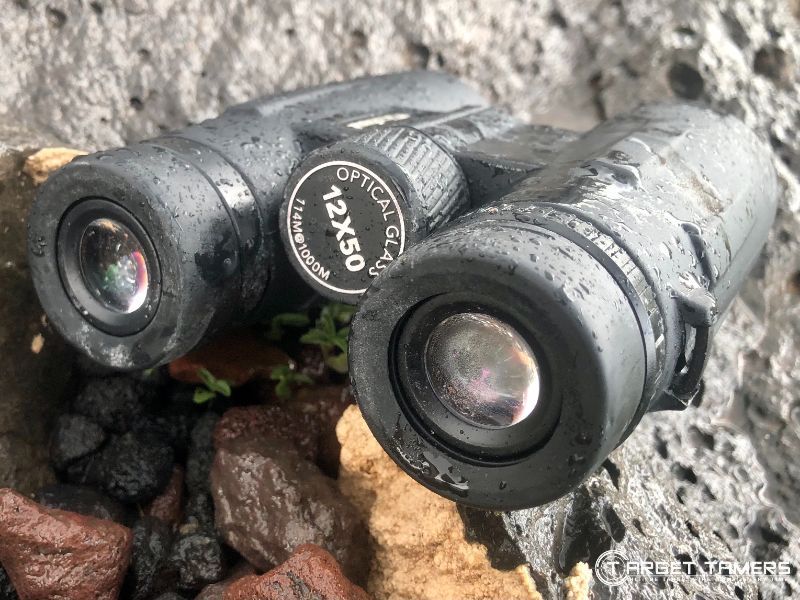
The truth is, getting moisture out of binoculars is extraordinarily difficult. Because there are limited practical solutions to removing condensation from binoculars, it is far better to practice prevention. The best method to preventing moisture is to buy water and fogproof binoculars.
In all honesty, there’s not a whole lot you can do to get water out once it’s in. The best that you can hope for is to dry out moisture using various methods. The trick is to do so without damaging coatings, tearing into the binocular, and unintentionally voiding the warranty.
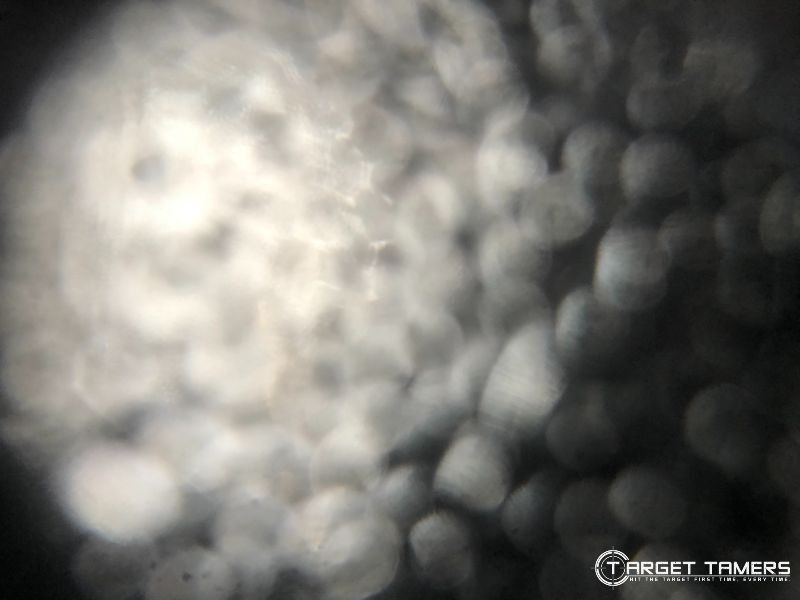
Below are removal and prevention tips that you can try right now.
To make the best purchasing decision the first time, waterproof binocular recommendations are included!
5 Ways to Get Water Out of Binoculars
1. Buy Fogproof Binoculars
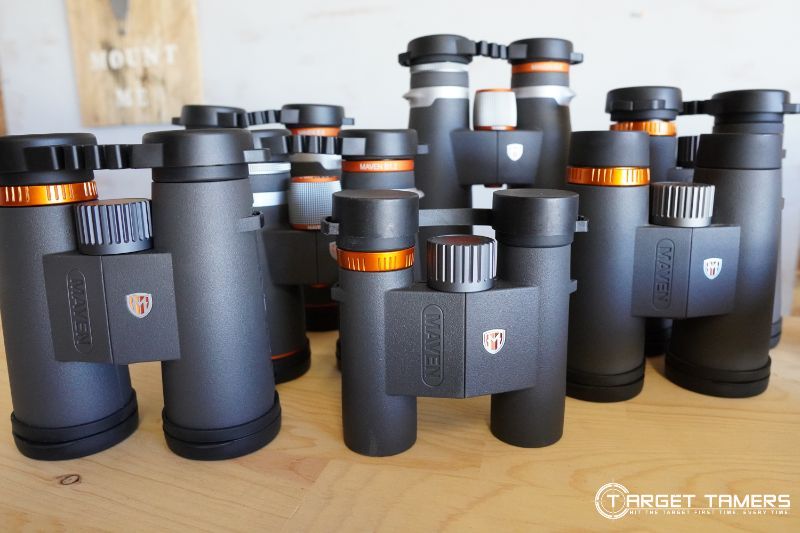
The best method to get water out of binoculars is to prevent it. Fogproof binoculars indicate that it is always waterproof as the dry gas requires a sealed chamber to be effective. The use of an inert dry gas prevents internal condensation. Not all waterproof binoculars are also fogproof.
Fogproof binoculars will incorporate nitrogen or agon gases to purge out oxygen. The type of gas used should be listed in the binocular description and/or specifications. The use of gas prevents condensation and fungi from forming on the inside.
If you’re also experiencing fogging on the exterior, our How to Keep Binoculars From Fogging Up guide has additional tips!
In today’s market, water and fogproof binoculars are more affordable as consumers are demanding it as a standard expectation of build quality.
Tip:
Most budget binoculars in the Under $200 range meet this weatherproofing expectation.
2. Use a Desiccant
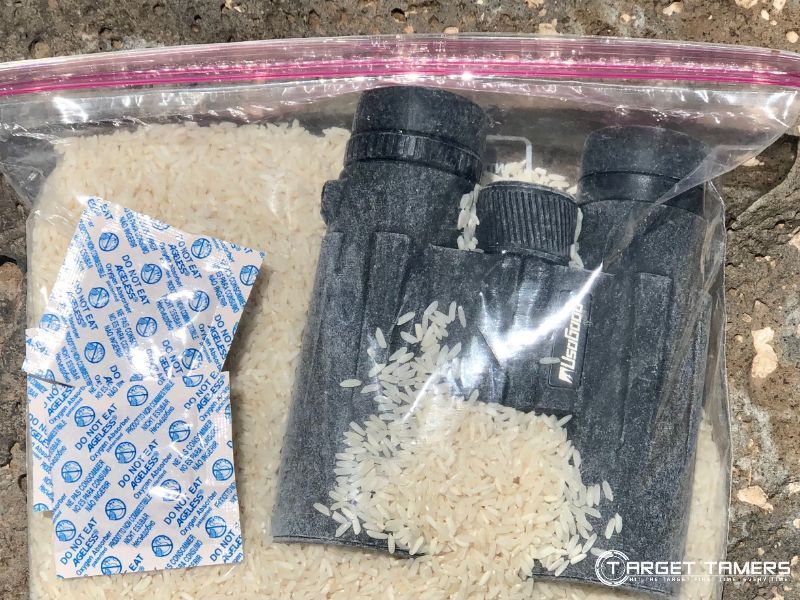
Using a desiccant to remove water from the insides of binoculars is one of the only real methods that can work. Popular desiccants such as uncooked rice and silica gel is effective for absorbing moisture that has penetrated the binoculars.
Tip:
Store the binoculars with the desiccant in an airtight bag such as a Zip-Lock bag. Most moisture can be absorbed inside 24 hours, but severe cases may require longer.
3. Clean Your Binoculars
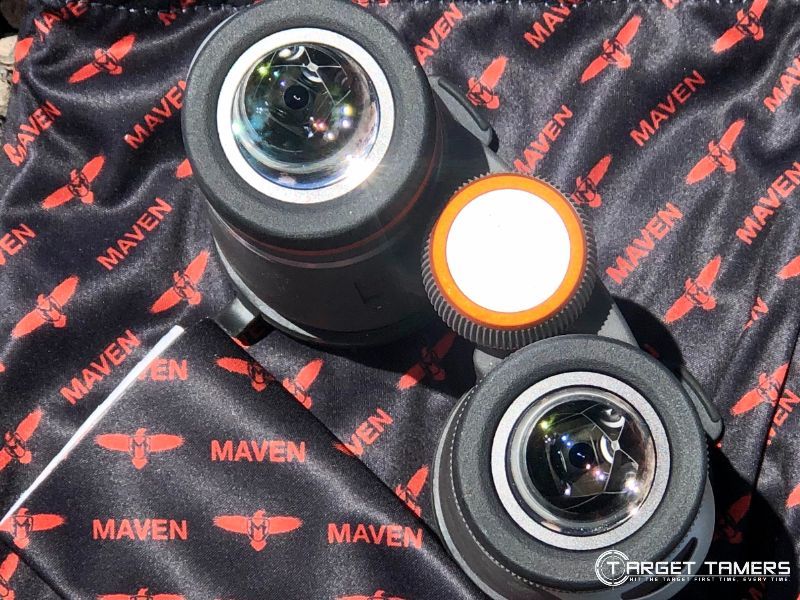
It’s not practical nor advised to clean the binoculars after every use. Coatings can be negatively impacted, and optimal binocular longevity is diminished. However, allowing binocular lenses to dry naturally by themselves can also diminish lens quality. Cleaning binoculars is a preventative method.
If binoculars get wet or are exposed to dusty environments, follow cleaning procedures before storing away to maintain binocular integrity.
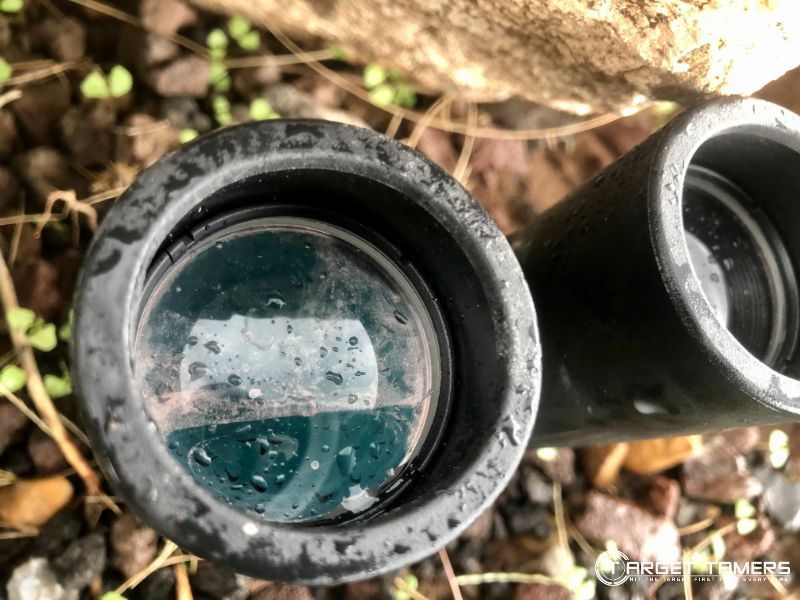
Use a dust blower on the body to remove dust. Never use paper towels, tissues, or clothing to wipe or dry the lenses.
Tip:
An optical lens pen with the brush end can remove dust and oils from the glass while microfiber cloths can clean and remove moisture without damaging the coatings.
4. Dry Your Binoculars
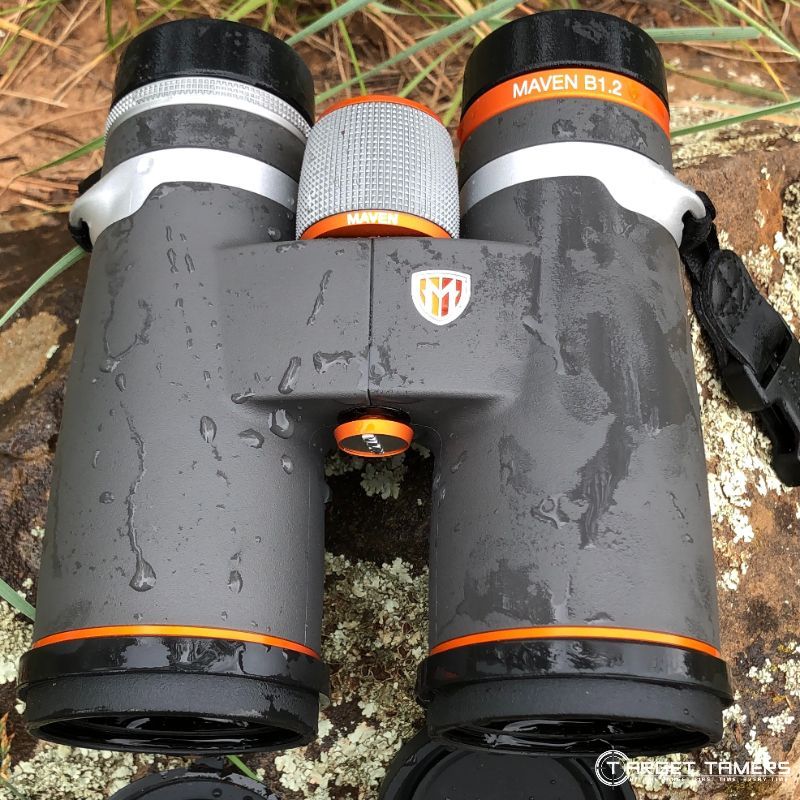
Drying binoculars may seem like a trivial method, but it goes a long way in preventing internal binocular moisture. Letting moisture sit on the body armor can deteriorate it in the long term and the same is true of the glass lenses.
Taking precision care to dry off the binoculars also provides a chance to inspect build quality. There may be leaks or cracks that need repairing to prevent further damage and from dust and moisture penetrating the insides.
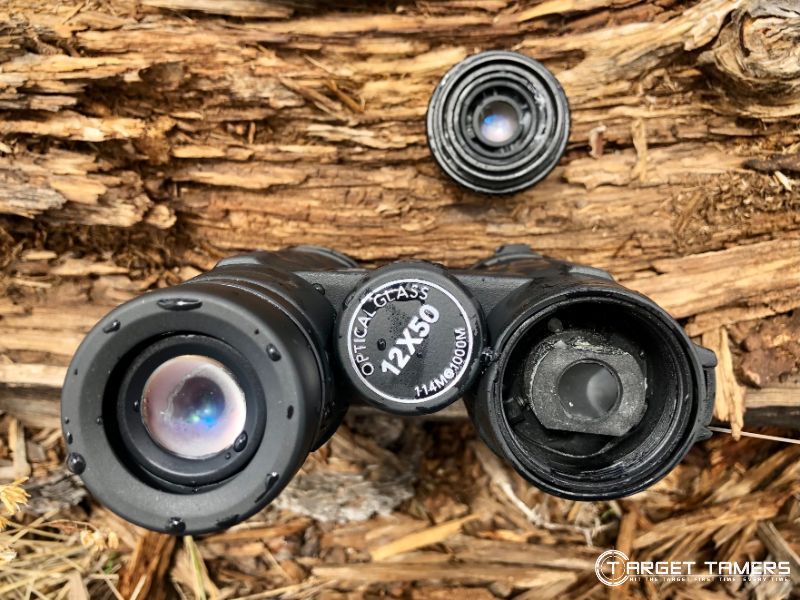
Tip:
If the eyepieces are removable, drying the inside may be necessary if water has penetrated the ocular bells. Again, microfiber cloths are the best type of fabric to dry and clean the lenses.
5. Store Binoculars in a Dry Location
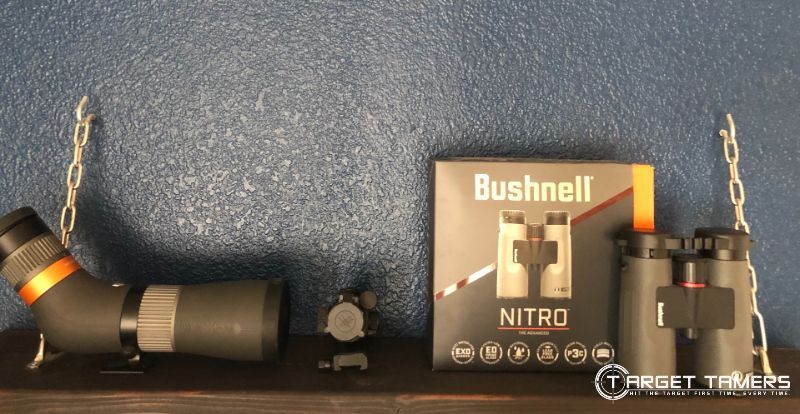
Simply storing binoculars away in a dry location that has internal condensation will not be enough to make them usable again. When water dries up, the image is blurry like a kaleidoscope. Storing binoculars in a dry location is a prevention method versus a practical solution to removing moisture.
After use, always store binoculars in a dry location with low humidity and consistent temperature conditions.
Tip:
If binoculars have been exposed to moisture, avoid using the binocular case/storage bag as the case is likely to harbor condensation.
Fogproof VS Waterproof Binoculars
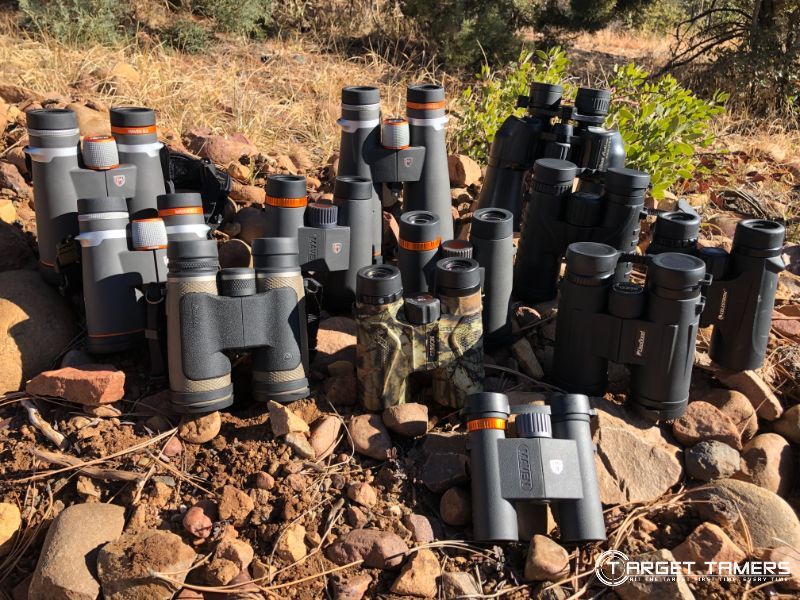
Fogproof binoculars have also been sealed. The O-rings in binoculars are made of rubber and provide watertight benefits that prevents moisture from intruding into the binocular chambers. All moving and access points to the binocular should be sealed off.
Waterproof binoculars should have a rating to confirm its resistance or submersion capacity. The actual IP/JIS rating is difficult to find as it’s not usually listed by the manufacturer, but it can be determined by its capabilities listed, i.e., Submersible up to 1m for 30 mins = IPX7 or IP67 (IP67 has been tested for dustproof integrity.)
Best Waterproof Binoculars
| Product | Type of Fogproof Gas Used | Waterproof Rating | Price Range |
|---|---|---|---|
| Celestron Outland X 10x42 | Nitrogen | IPX7 | Under $100 |
| Vortex Crossfire HD 12x50 | Nitrogen | IPX7 | Under $200 |
| Zeiss Terra ED 10x42 | Nitrogen | IPX7 | Under $500 |
| Swarovski 10x25 CL Pocket | Nitrogen | IP68 | Under $1000 |
| Leupold BX-5 Santiam HD 15x56 | Argon/Krypton blend | IP67 | Under 1500 |
Are Waterproof Binoculars Worth it?
For as affordable as waterproof binoculars are in the current market, the recommendation is to settle for nothing less. Waterproof binoculars are O-ring sealed to keep out moisture. Fogproof binoculars are gas-purged to keep condensation and fungi growth from forming on the inside.
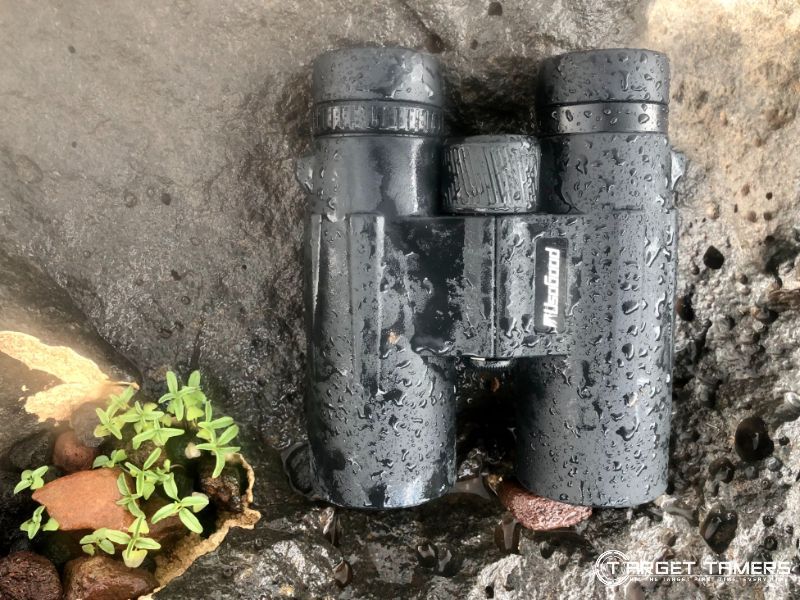
Water and fogproof binoculars are an asset to all outdoorsmen of all types regardless of the conditions. Even when it’s great outside, keeping out dust and moisture particles not visible to human eyes are all part of the inherent functions of well-built binoculars.
It’s better to have this protection and not realize you need it than to have binoculars without it and possibly render them useless after just one mistake.
Further Reading



